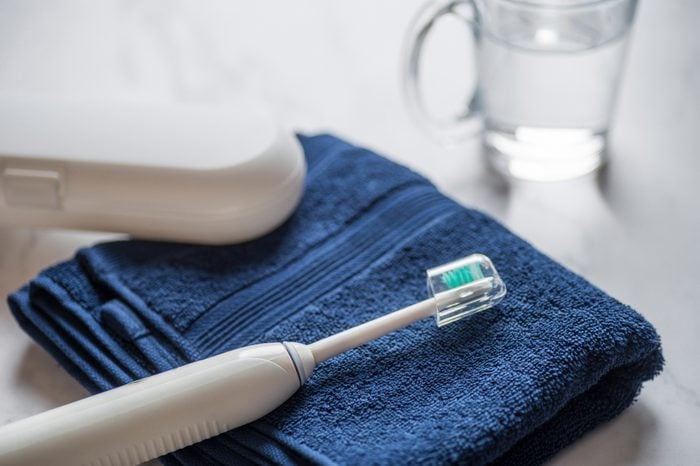
Use a special electric toothbrush
An electric toothbrush is the top natural teeth whitener, says Mark Burhenne, DDS, a sleep medicine dentist in Sunnyvale, CA. Oscillatory electric toothbrushes are the best at removing stains for natural teeth whitening, he says. The motion of the bristles breaks up the pellicle, or film, on your teeth. “A thick pellicle will speed the staining process, so it’s a good idea to break it up with an electric toothbrush if you’re trying to expose your brighter teeth,” he says.
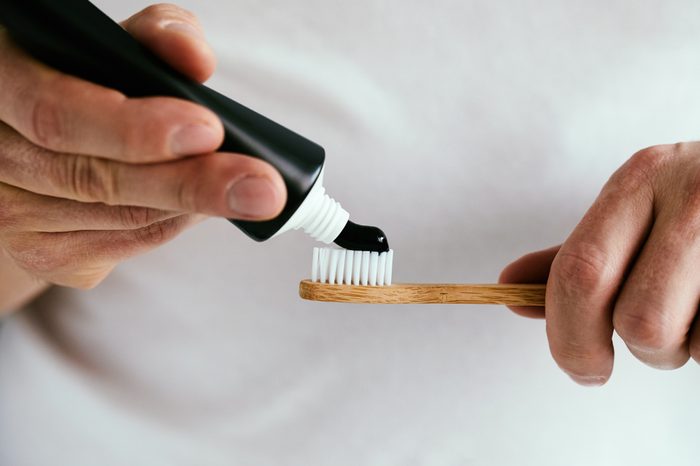
Try a whitening toothpaste
Believe it or not, there are no “whitening toothpastes” in the strict sense of the word, according to Burhenne. “Toothpaste can really only remove stains, not whiten enamel,” he says. Although it might be hard to find, look for toothpaste with creamy textures and citroxain or activated charcoal, Burhenne says. But don’t over-use activated charcoal products for natural teeth whitening; it’s best to use them in moderation and discuss usage with your dentist. If you need some product inspiration, check out these 14 teeth whitening products dentists use themselves.
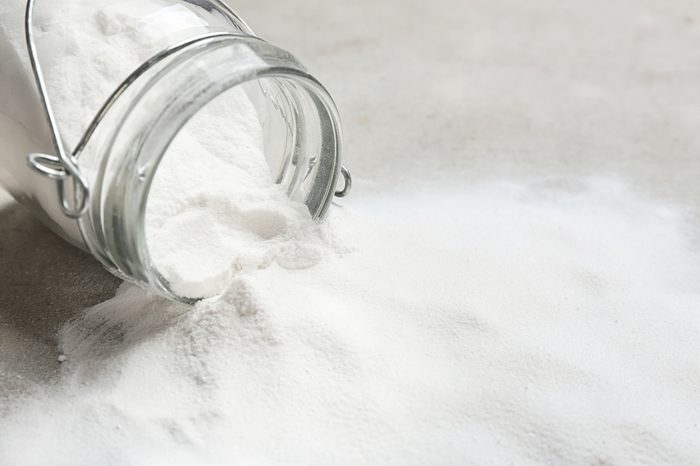
Boost your toothpaste with baking soda
If you want to take your normal toothpaste to the next level, try adding a little baking soda to your paste for a natural teeth whitener, says Elliot Zharnitsky, DDS, an orthodontist at Diamond Braces in New York, NY. Research shows that toothpaste with baking soda not only works for stain removal but also removes plaque from teeth more effectively than non-baking soda toothpaste. Here are more toothpastes dentists use for natural teeth whitening.
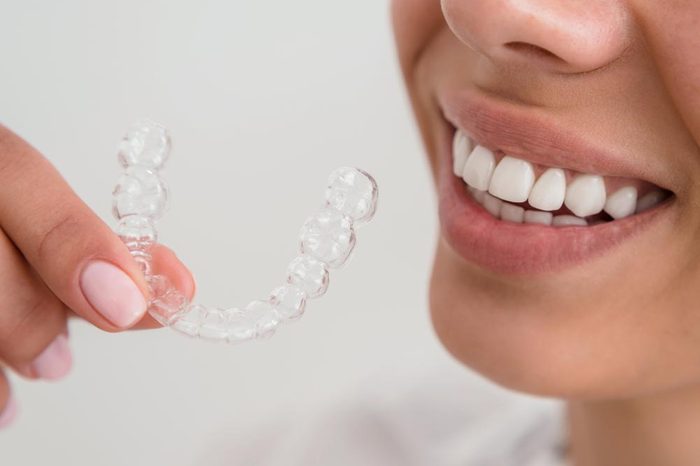
Opt for whitening trays
If you can afford to get custom teeth whitening trays, it could be worth it. Although this isn’t a natural teeth whitener, it is effective and done by a professional. The doctor takes molds of your teeth, creates trays, and then provides a whitening gel often made with peroxide. People can then brighten their smile in the comfort of their own home, Zharnitsky says. Before you head to your dentist for a tray, make sure you note these 9 things dentists wish you knew about teeth whitening.
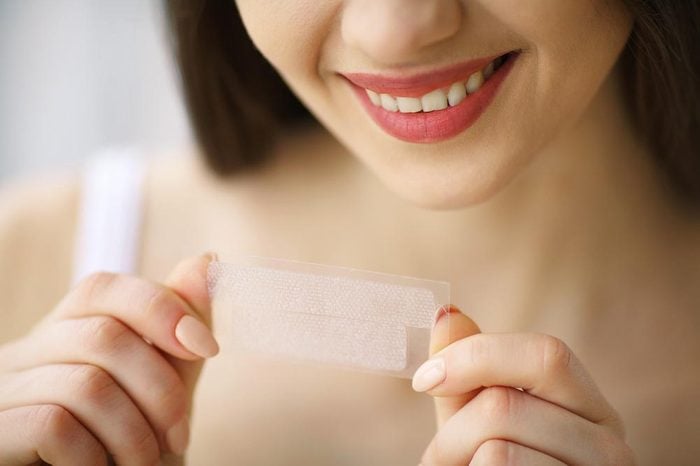
Whitening strips are another possible option
While not the most natural teeth whitening method, whitening strips are a quick drugstore purchase for people who want to brighten their teeth. These can be effective and easy to use, but Burhenne notes that there are a few more risks involved, including gum irritation and teeth sensitivity with overuse. Make sure you’re not immediately brushing before or after using strips, or any other teeth whitening products, and cut them so they don’t touch your gums.
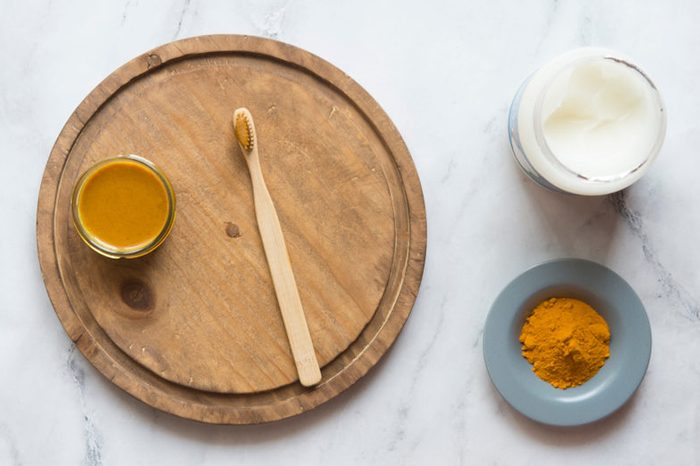
Use a turmeric mixture
Burhenne is also a fan of turmeric for natural teeth whitening. He recommends mixing turmeric with coconut oil and swishing the mixture in your mouth for a few minutes each day or several times a week. “Both coconut oil and turmeric are great for managing a healthy oral microbiome,” he says. “This is important because having a biome in the mouth that keeps plaque and biofilm at bay is key to removing and preventing stains.” Oil pulling could potentially help with teeth whitening, but it’s not the miracle technique some people think it is. Some studies on the traditional folk remedy show that oil pulling reduces mouth bacteria and plaque, but more research is necessary to definitely say it brightens teeth. And, here’s what nutritionists need you to know about coconut oil.
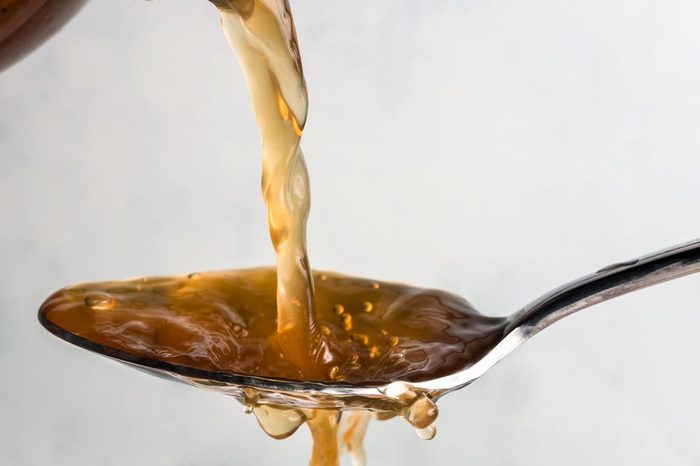
Don’t use anything acid-based
Many methods of at-home “natural” teeth whitening use acidic or abrasive elements (more on them later). Foods like strawberries, orange peels, or apple cider vinegar can make your teeth appear brighter—but they are very bad for your overall oral health, according to Burhenne. “Using something acidic on your teeth will eat away more quickly at enamel, weakening teeth and making them more likely to age faster,” he says. But just because you shouldn’t rub fruit on your teeth doesn’t mean they are bad to eat. In fact, a healthy diet is still a good idea for your oral health. These 7 foods can whiten your teeth—but there are also 4 you should avoid.
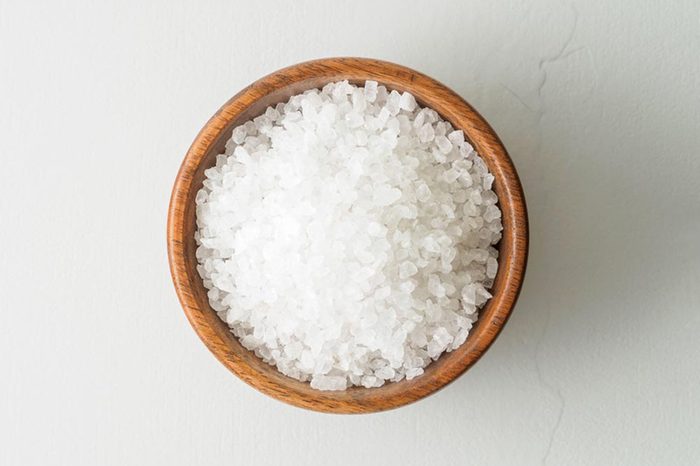
Avoid abrasive methods
Abrasive scrubs with things like sea salt are also not ideal for teeth whitening. The same goes for toothpaste that’s anything less than creamy. Using these methods reduces staining while also creating microscopic scratches on your teeth. “Abrasive ingredients, even ‘natural’ ones, will cause microabrasions on the teeth that are a great breeding ground for bacteria that cause tooth decay,” Burhenne says. You won’t need a natural teeth whitener if you don’t have any teeth!
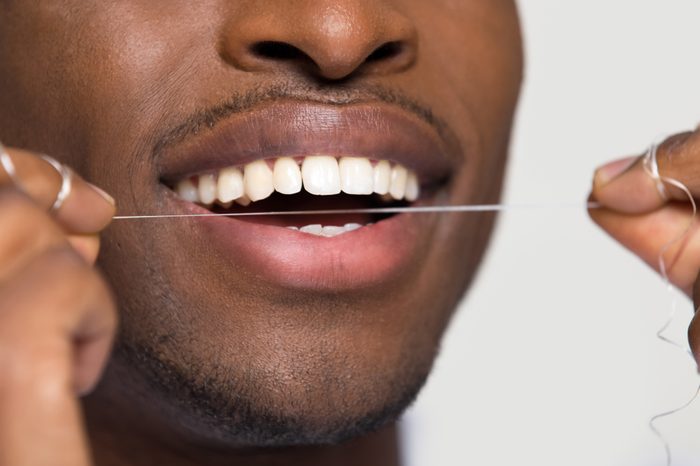
Stain prevention is key
The bottom line is, natural teeth whitener options are only helpful if you also prevent future stains. Burhenne recommends staying hydrated, swishing water in your mouth post-meals, and treating other oral health issues like bruxism. The wear and tear of bruxism, or teeth grinding, can also prematurely age teeth, causing them to yellow, according to Burhenne. “Overall health can greatly impact how fast your teeth age and fast-aging teeth look yellow,” he says. “Focus on good hydration and a healthy diet to keep your teeth bright from the inside out.” Zharnitsky also says consistent brushing, flossing, and regular check-ups with your dentist will prevent staining before it happens. Prevent tooth decay while you’re at it and avoid these 30 everyday mistakes that can ruin your teeth.

